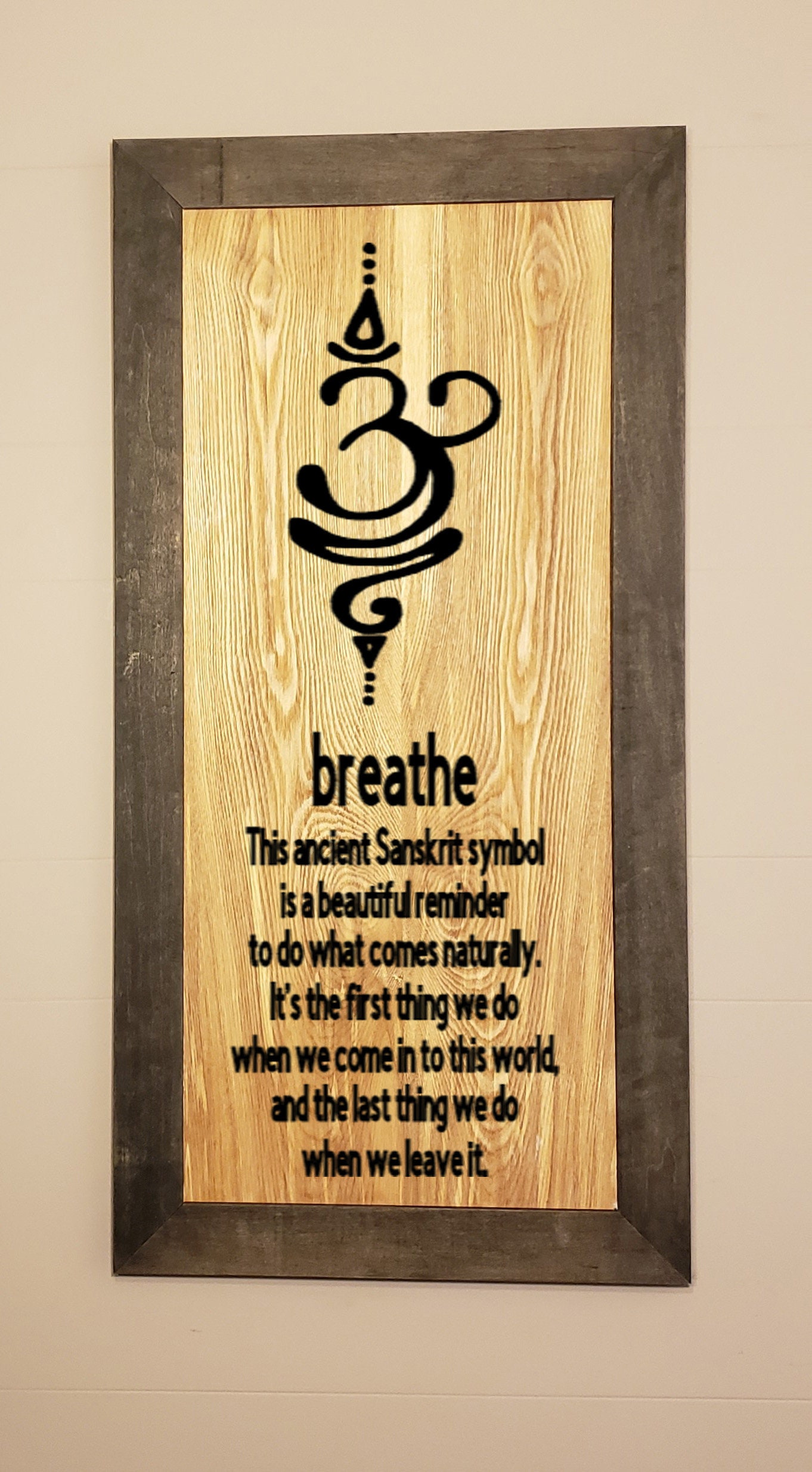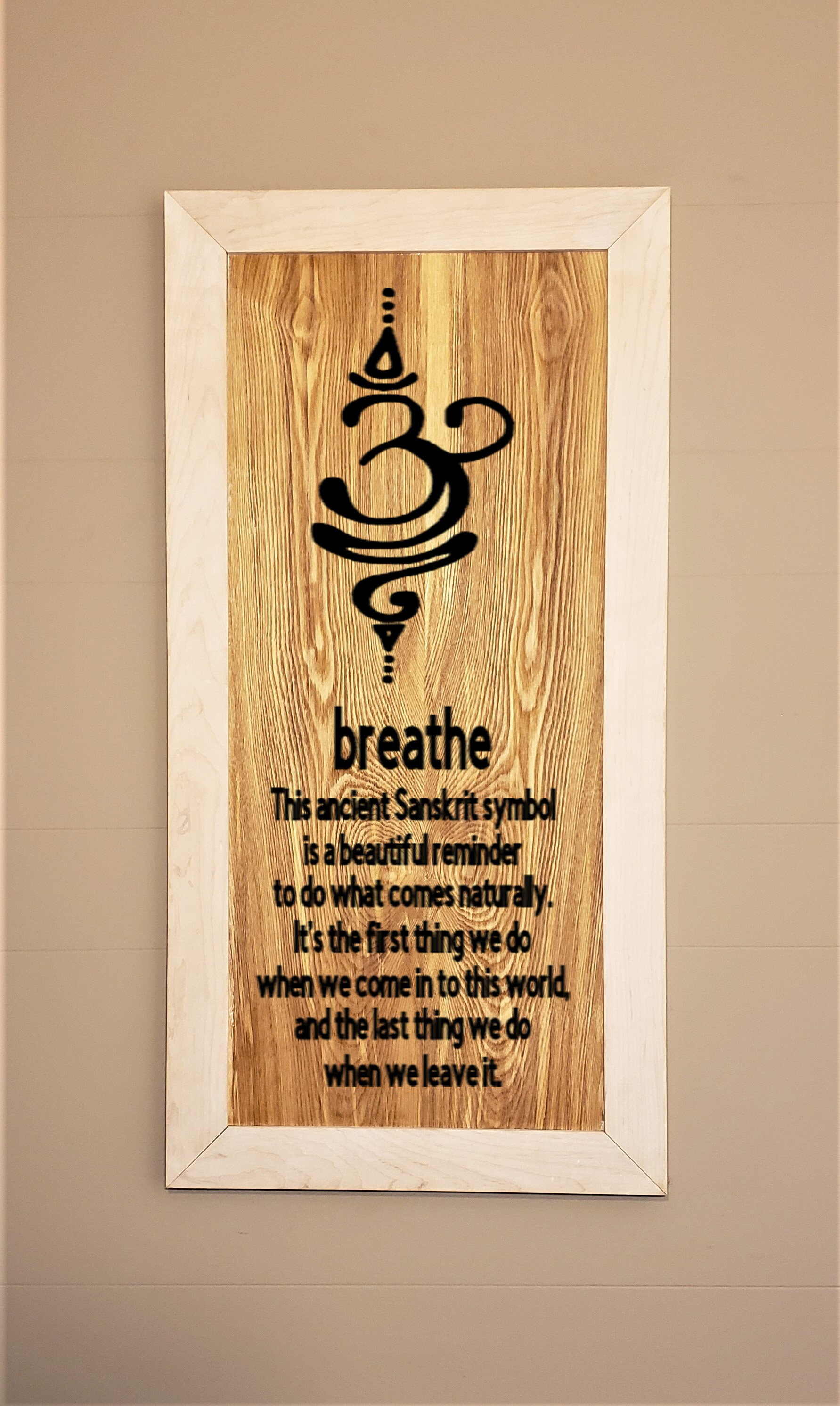Imagine this: You're sitting in a quiet room, eyes closed, and all you can hear is the sound of your breath. But what if we told you that the way you breathe could change your life? Welcome to the world of Breathe Sanskrit, where ancient wisdom meets modern well-being. This isn't just about inhaling and exhaling—it's about tapping into a centuries-old practice that can transform your mind, body, and soul.
You’ve probably heard about yoga and meditation, right? Well, Breathe Sanskrit takes it to the next level. It’s not just about calming down or relaxing; it’s about mastering the art of pranayama, the Sanskrit term for “extension of life force.” This practice has been around for thousands of years, and it’s still as relevant today as it was back in the day.
So, why should you care? In today’s fast-paced world, stress, anxiety, and burnout are real problems. And while there’s no magic pill for these issues, Breathe Sanskrit offers a natural, effective, and scientifically-backed solution. Stick around, and we’ll break it down for you step by step.
- Bollyflix Bangla Your Ultimate Destination For Bangla Movies And Entertainment
- Djo The Rising Star Shining Brighter Than Ever
What Exactly Is Breathe Sanskrit?
Let’s dive right into the basics. Breathe Sanskrit refers to the practice of using ancient Sanskrit techniques to enhance your breathing patterns. These techniques are rooted in pranayama, a fundamental aspect of yoga that focuses on controlling your breath to improve your overall well-being.
Here’s the deal: Sanskrit is more than just an ancient language. It’s a powerful tool that connects you to the roots of spirituality and mindfulness. When you combine Sanskrit mantras with controlled breathing, you unlock a whole new level of mental clarity, emotional balance, and physical health.
Why Should You Care About Breathe Sanskrit?
Okay, so you might be thinking, “Why should I bother with this ancient stuff when I’ve got modern stress to deal with?” Well, here’s the thing: Breathe Sanskrit isn’t just for spiritual seekers or yoga enthusiasts. It’s for anyone who wants to take control of their life.
- Young Sheldon Cast The Ultimate Guide To The Nerdy Adventures Of A Child Prodigy
- Charles Shaughnessy The Man Who Left An Indelible Mark On Hollywood
- Reduces stress and anxiety levels
- Improves focus and concentration
- Boosts energy levels and stamina
- Enhances emotional resilience
- Promotes better sleep quality
And guess what? These benefits aren’t just based on ancient texts. Modern science backs them up too. Studies have shown that practicing pranayama can lower cortisol levels, improve cardiovascular health, and even boost your immune system. Who wouldn’t want that, right?
Understanding the Basics of Pranayama
Before we get into the nitty-gritty of Breathe Sanskrit, let’s talk about pranayama. Think of it as the foundation of everything we’re about to explore. Pranayama is all about controlling your breath to regulate your life force, or “prana.”
There are different types of pranayama, each with its own unique benefits. Some focus on calming the mind, while others aim to energize the body. The key is to find the techniques that work best for you and incorporate them into your daily routine.
Popular Pranayama Techniques You Should Know
Here are a few pranayama techniques that are commonly used in Breathe Sanskrit practices:
- Ujjayi Breath (Victorious Breath): This one’s great for calming your mind and improving focus.
- Kapalabhati (Skull Shining Breath): If you need a quick energy boost, this is your go-to technique.
- Nadi Shodhana (Alternate Nostril Breathing): Perfect for balancing your energy and reducing stress.
- Bhramari (Bee Breath): This one’s awesome for soothing anxiety and promoting relaxation.
Now, don’t get overwhelmed. You don’t have to master all of these techniques at once. Start with one or two, and gradually build up your practice. Consistency is key, so stick with it, and you’ll start noticing the benefits in no time.
The Science Behind Breathe Sanskrit
Let’s talk science for a sec. Why does Breathe Sanskrit work so well? It all comes down to how your body responds to controlled breathing. When you practice pranayama, you activate your parasympathetic nervous system, which helps your body relax and recover.
Here’s a fun fact: Did you know that deep breathing can actually change the way your genes express themselves? Research has shown that practicing pranayama can lead to positive changes in gene expression, which can improve your overall health and well-being.
How Breathe Sanskrit Affects Your Brain
Your brain loves Breathe Sanskrit. Seriously. When you practice controlled breathing, it increases blood flow to your brain, which improves cognitive function and enhances creativity. Plus, it releases feel-good hormones like serotonin and dopamine, making you feel happier and more relaxed.
And let’s not forget about mindfulness. Breathe Sanskrit helps you stay present in the moment, which is crucial for reducing stress and improving mental clarity. So, if you’re feeling overwhelmed or distracted, a few minutes of pranayama can do wonders for your mind.
Getting Started with Breathe Sanskrit
Ready to give it a try? Great! Here’s a step-by-step guide to help you get started with Breathe Sanskrit:
- Find a quiet, comfortable space where you won’t be disturbed.
- Sit in a comfortable position, either on the floor or in a chair. Keep your back straight but relaxed.
- Close your eyes and take a few deep breaths, focusing on your inhale and exhale.
- Choose a pranayama technique from the list above and follow the instructions carefully.
- Practice for 5-10 minutes, gradually increasing the duration as you become more comfortable.
Remember, consistency is key. Even if you only have a few minutes a day, stick with it, and you’ll start noticing the benefits over time.
Tips for Beginners
Here are a few tips to help you get the most out of your Breathe Sanskrit practice:
- Start small and build up gradually.
- Focus on your breath and let go of distractions.
- Be patient with yourself and don’t rush the process.
- Experiment with different techniques to find what works best for you.
And most importantly, have fun with it! Breathe Sanskrit isn’t about perfection—it’s about finding peace and balance in your life.
Common Mistakes to Avoid
Now that you’re ready to dive in, let’s talk about some common mistakes to avoid:
- Forcing Your Breath: Don’t push yourself too hard. Let your breath flow naturally and gently.
- Skipping Warm-Ups: Just like any exercise, it’s important to warm up your body before diving into pranayama techniques.
- Overdoing It: Start with short sessions and gradually increase the duration. Pushing yourself too hard can lead to discomfort or even injury.
Remember, Breathe Sanskrit is a journey, not a destination. Be kind to yourself and take it one breath at a time.
How to Stay Motivated
Staying motivated can be tough, especially when you’re first starting out. Here are a few tips to help you stay on track:
- Set realistic goals and celebrate your progress.
- Join a community or find a buddy to practice with.
- Keep a journal to track your progress and reflect on your experiences.
And don’t forget to be patient with yourself. Change takes time, and every step forward is worth celebrating.
Advanced Techniques for Experienced Practitioners
Once you’ve mastered the basics, it’s time to take your practice to the next level. Here are a few advanced techniques to explore:
- Sheetali Pranayama (Cooling Breath): Perfect for reducing heat and calming the mind.
- Sheetkari Pranayama (Hissing Breath): Another great technique for cooling your body and mind.
- Murcha Pranayama (Swooning Breath): This one’s for advanced practitioners only, as it involves holding your breath for extended periods.
Remember, these techniques require more focus and discipline, so approach them with caution and respect.
When to Consult a Professional
If you’re dealing with serious health issues or conditions like asthma, it’s always a good idea to consult a professional before diving into advanced pranayama techniques. A qualified yoga instructor or healthcare provider can help you tailor your practice to suit your needs.
Conclusion: Embrace the Power of Breathe Sanskrit
So, there you have it—the ultimate guide to Breathe Sanskrit. Whether you’re a beginner looking to reduce stress or an experienced practitioner seeking to deepen your practice, there’s something here for everyone.
Remember, the key to mastering Breathe Sanskrit is consistency and patience. Take it one breath at a time, and you’ll start noticing the benefits in no time. And don’t forget to share your experiences with others—after all, the more we spread the word, the more people can benefit from this ancient wisdom.
Now, it’s your turn. Are you ready to embrace the power of Breathe Sanskrit and transform your life? Let us know in the comments below, and don’t forget to share this article with your friends and family. Together, we can create a healthier, happier world—one breath at a time.
Table of Contents
- What Exactly Is Breathe Sanskrit?
- Why Should You Care About Breathe Sanskrit?
- Understanding the Basics of Pranayama
- Popular Pranayama Techniques You Should Know
- The Science Behind Breathe Sanskrit
- How Breathe Sanskrit Affects Your Brain
- Getting Started with Breathe Sanskrit
- Tips for Beginners
- Common Mistakes to Avoid
- How to Stay Motivated
- Advanced Techniques for Experienced Practitioners
- When to Consult a Professional



Detail Author:
- Name : Dr. Elian McCullough
- Username : ratke.susie
- Email : hschuppe@gmail.com
- Birthdate : 1992-10-03
- Address : 626 Yundt Squares Apt. 848 Angelitastad, CO 38673
- Phone : +1-772-874-3352
- Company : Kuvalis LLC
- Job : Telephone Station Installer and Repairer
- Bio : Quis explicabo odit commodi omnis ea at reiciendis. Fuga porro culpa alias dolore. Minus enim magnam aut. Cum fugit aliquid blanditiis totam neque incidunt suscipit quia.
Socials
instagram:
- url : https://instagram.com/isom_weber
- username : isom_weber
- bio : Facere deserunt earum molestiae aut beatae voluptate et. Et id amet accusantium et porro est.
- followers : 2133
- following : 2361
twitter:
- url : https://twitter.com/isomweber
- username : isomweber
- bio : Quisquam quasi consequatur tempore quia. Voluptatem id laudantium consequatur neque.
- followers : 5472
- following : 2727
